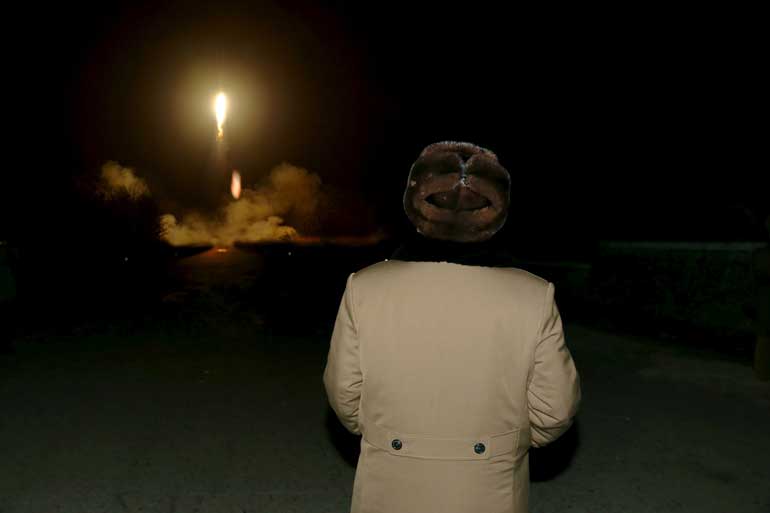Monday Dec 15, 2025
Monday Dec 15, 2025
Saturday, 19 March 2016 00:00 - - {{hitsCtrl.values.hits}}
 Reuters: North Korea fired at least one ballistic missile on Friday, which flew about 800 km before hitting the sea off its east coast, South Korea’s military said, as the isolated state stepped up its defiance of tough new UN and US sanctions.
Reuters: North Korea fired at least one ballistic missile on Friday, which flew about 800 km before hitting the sea off its east coast, South Korea’s military said, as the isolated state stepped up its defiance of tough new UN and US sanctions.
South Korea’s Yonhap news agency said the missile was likely a medium-range Rodong-missile. If confirmed, it would mark North Korea’s first test of a medium range missile, capable of reaching Japan, since 2014.
The launch comes amid heightened tension on the Korean peninsula after the North rejected UN Security Council sanctions imposed earlier in the month in response to a nuclear test conducted in January and the United States issued fresh sanctions this week.
The missile was launched from north of the capital, Pyongyang, flying across the peninsula and into the sea off the east coast early Friday morning, the South’s Office of the Joint Chiefs of Staff said in a statement.
It appeared the North may have fired a second missile soon after from the same region, with a projectile disappearing from radar at an altitude of about 17 km, it added. South Korea did not confirm the type of the missiles. But 800 km was likely beyond the range of most short-range missiles in the North’s arsenal. The North’s Rodong missile has an estimated maximum range of 1,300 km, according to the South’s defence ministry.
A US official told Reuters in Washington that it appeared to be a medium-range missile fired from a road-mobile launcher.
The US State Department said in a statement it was closely monitoring the situation and urged North Korea to focus on taking concrete steps toward fulfilling its international commitments and obligations.
Japan quickly condemned the launch, lodging a protest with North Korea through its embassy in Beijing, Prime Minister Shinzo Abe told parliament.
“Japan strongly demands North Korea to exercise self-restraint and will take all necessary measures, such as warning and surveillance activity, to be able to respond to any situations,” Abe said.
Last week, the North fired two short-range missiles into the sea off its east coast and its leader Kim Jong Un ordered more nuclear weapons tests and missile tests to improve attack capability.
North Korea often fires missiles at periods of tension on the Korean peninsula or when it comes under pressure to curb its defiance and abandon its weapons programmes.
New US sanctions on Pyongyang were issued on Wednesday aiming to expand its blockade by blacklisting individuals and entities that deal with the North’s economy.
The North has also reacted angrily to annual joint military drills by US and South Korean troops that began on 7 March, calling the exercises “nuclear war moves” and threatening to wipe out its enemies.
South Korea and US officials began discussions this month on deploying the advanced anti-missile Terminal High Altitude Area Defence (THAAD) system to the US military in the South, despite Chinese and Russian objection.
Japan has previously said it was considering THAAD to beef up its defences.
North Korea conducted its fourth nuclear test in Jan. 6 and launched a long-range rocket on 7 February in defiance of existing UN Security Council resolutions.
On Wednesday, North Korea’s supreme court sentenced a visiting American student to 15 years of hard labour for crimes against the state, a punishment Washington condemned as politically motivated.